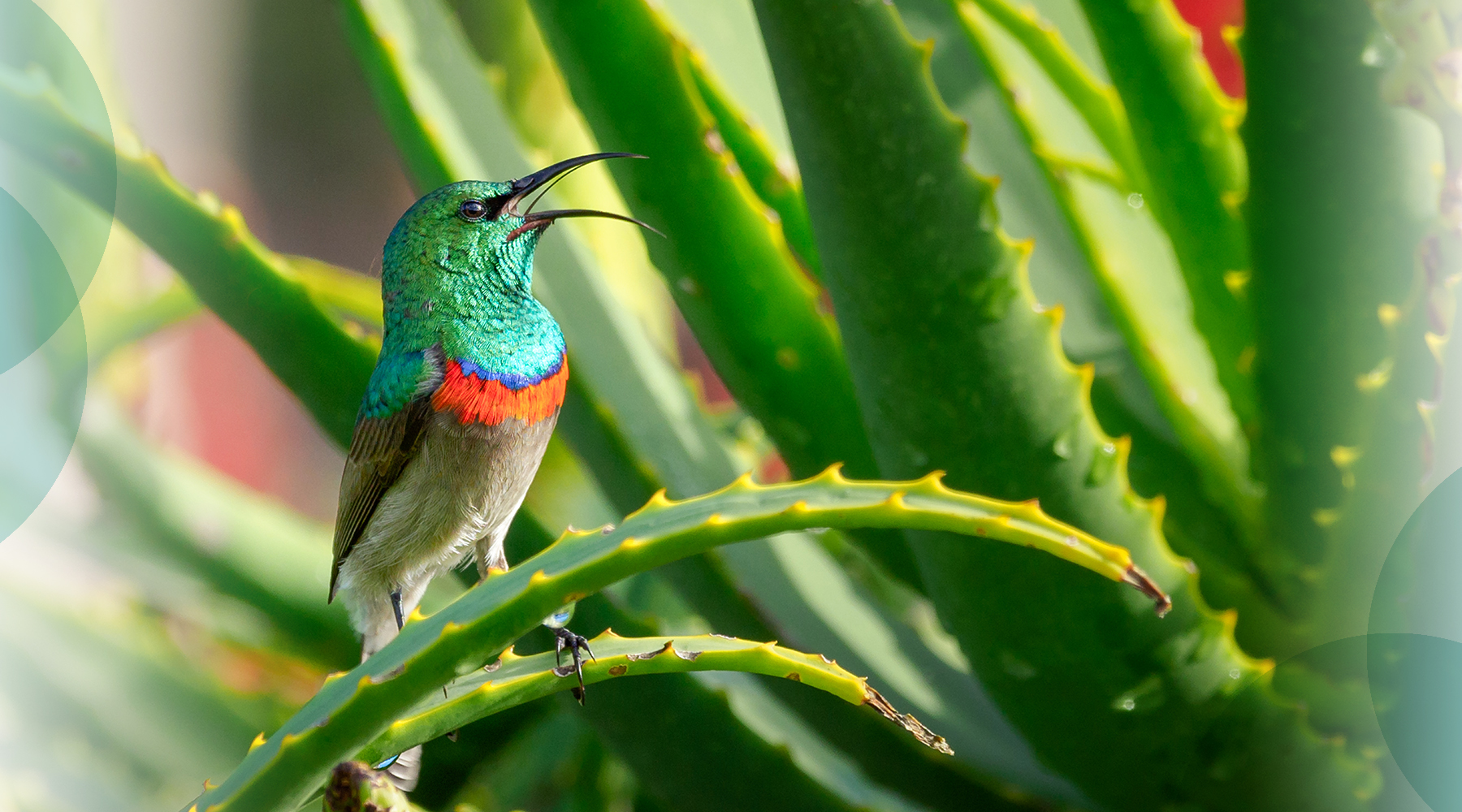So you want to turn your yard into a sanctuary for birds? All you’ve got to do is throw up a few bird feeders, right? Wrong!
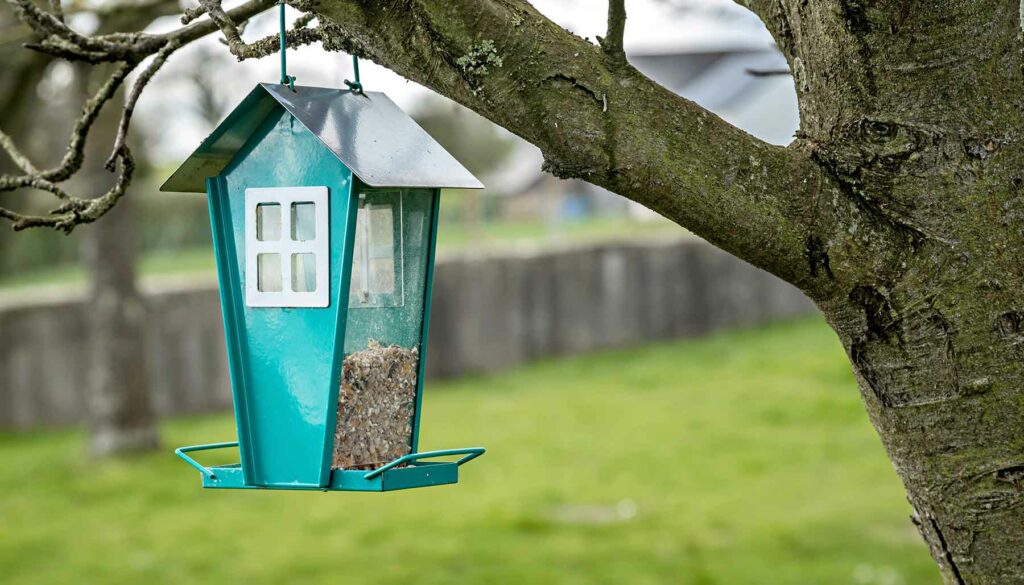
Sure, the bird feeders are pretty important. But there is a lot more to attracting birds than just hanging up a feeder. Trust me on this one – I have made that mistake!
When we first moved into our house, I was really excited about how many windows we had facing a patio area. I was going to hang up a giant bird feeder so we could see all our feathered friends hanging out. And hey, it might provide a little entertainment for the cats, too.
Well, I hung up that giant bird feeder. We got a bird or two, but it didn’t really attract a bunch of birds as I had hoped. And mostly, it just drove the squirrels insane trying to figure out how to get in it. Why weren’t the birds interested in my bird feeder, filled to the brim with birdseed?
I had made a few mistakes here. First of all, all I did was put up a new bird feeder. I didn’t do anything else to attract the attention of wild birds! There is a lot more that goes into establishing a bird-friendly area.
Before, I just went to the store and bought a bag of wild birdseed. I mean, that is what you put in a bird feeder, right? I didn’t even really know what was in the bag of birdseed. Like plenty of other people, I just bought the birdseed because I thought it was surely what the birds would eat.
Thankfully, I realized that I wasn’t doing it right. If I wanted the birds to come hang around my yard, I was going to have to do a little more. I needed to identify what kinds of birds lived here and what they liked. So, if you are hoping to attract birds to your yard, you get to learn from my mistakes! Here’s everything I’ve learned (so far) about attracting birds to your yard!
Decide on a Bird-Friendly Corner of Your Yard
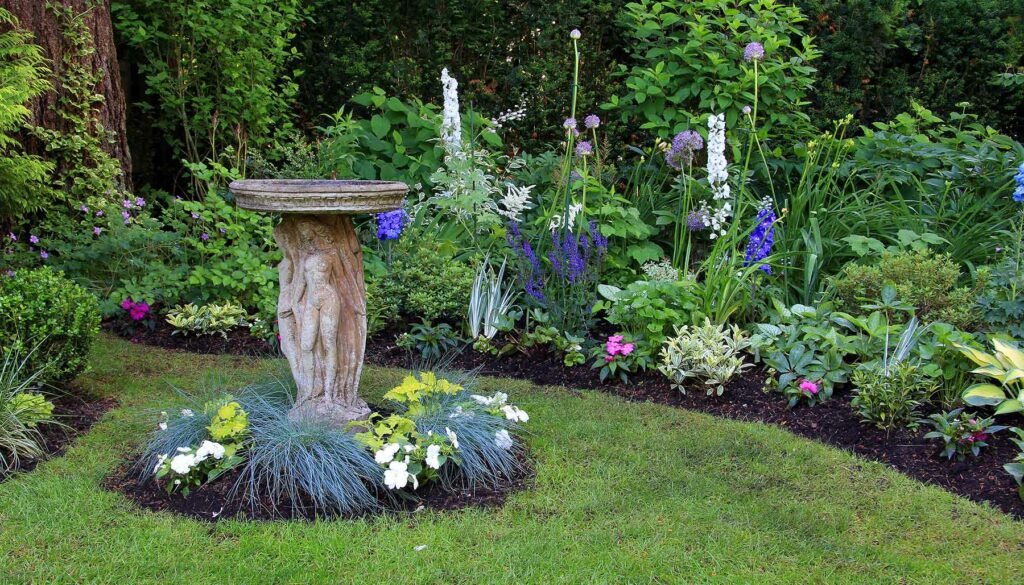
While it would be amazing to turn the entire yard into a bird sanctuary overnight, that goal might be a little lofty. We’re going to start small. When first starting out, it is best if you concentrate your efforts on a single area. Once established, it’ll be easier to end up with a whole bird-friendly yard.
Let’s talk about how to pick the best spot. You will want to pick an area that offers an adequate amount of greenery and cover nearby. This will help birds feel safe enough to explore. It is also a good idea to choose a spot that isn’t often disturbed. If it’s somewhere that sees regular traffic, or it’s a common hangout for a neighborhood cat, it’s clearly not a good spot for a bird sanctuary.
Add Food Sources
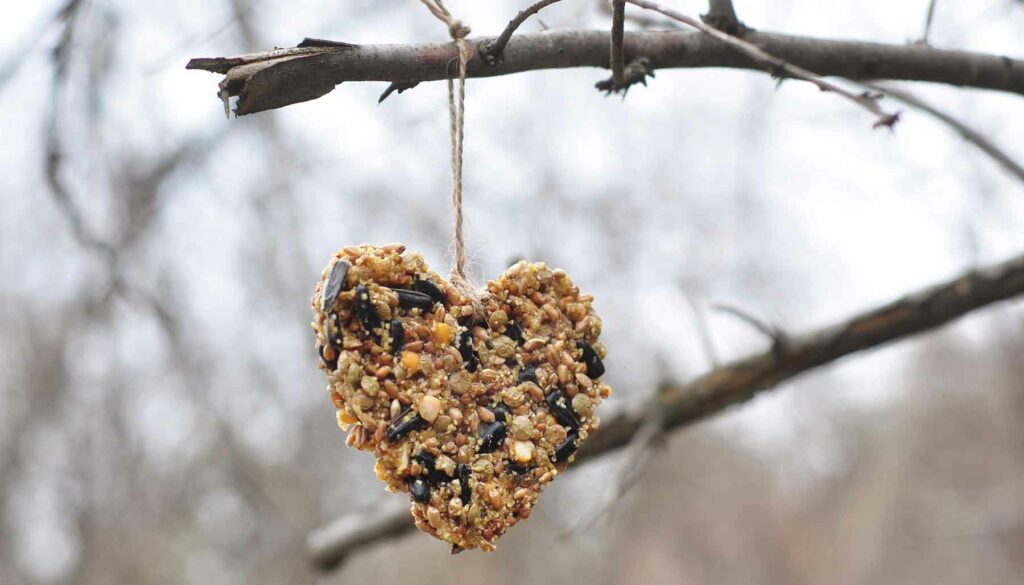
I know that this seems like an obvious suggestion, but adding food sources is an important step! If you want to entice some avian friends to come hang out, it’s time to break out the snacks. Birds, like most of the rest of us, are looking for some food to munch on.
Before you run to the store and purchase a bag of whatever cheap birdseed they have, it’s important to first figure out what you need. Not all birds enjoy the same snacks! Look up what birds are native to your area and what kinds of foods they eat. Most birds enjoy sunflower seeds, but every species has its own nutritional needs and food preferences.
These are common supplemental foods that you can offer to birds:
- Sunflower seeds
- Safflower seeds
- Dried and cracked corn
- Mealworms
- Dried fruit
- Suet
- Peanut butter
- Peanuts
- Nectar (sugar and water)
While you can feed wild birds some kitchen scraps, such as oats or bread, there are some foods that you should not give them:
- Avocado
- Fruit seeds or pits
- Artificial sweeteners
- Chocolate
- Raw potatoes
- Garlic
- Onion
- Coffee
- Cooked oats
In case you were wondering, the idea that you can’t feed birds rice is just a myth! Rice, whether cooked or uncooked, will not hurt wild birds. No, it won’t make their stomachs explode.
Use a Variety of Bird Feeders
In addition to learning about the kinds of food sources that your local birds enjoy, you’ll also want to check out the kinds of feeders they are attracted to, as well. And then, buy all the feeders!

Okay, in all seriousness, you will need to provide a variety of feeders in order to attract a bunch of birds. Not all feeders attract all birds. Not only do you need a variety of feeders, but they should also be placed at varying heights, too.
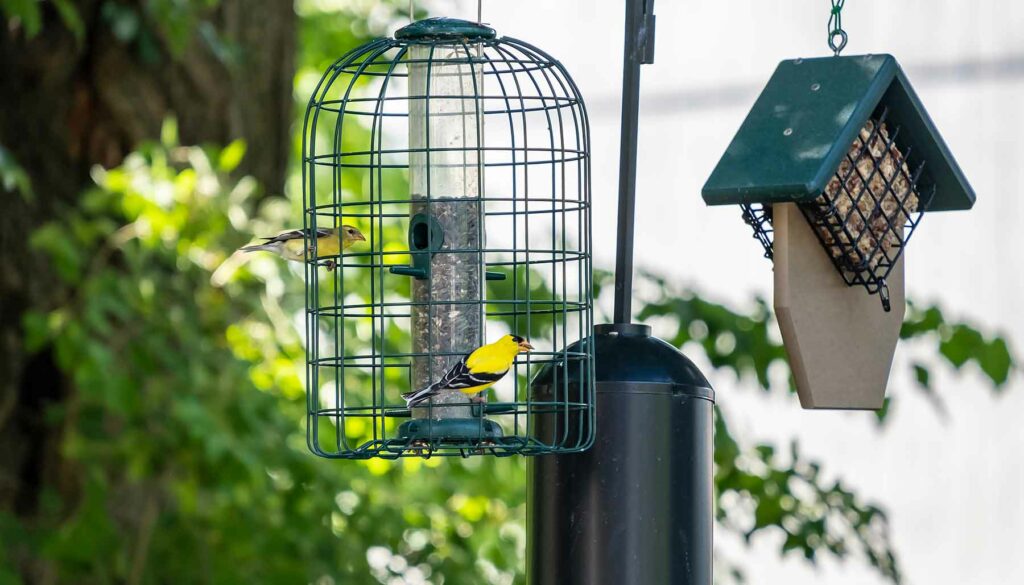
- Tube feeders – These are great for small birds, like finches, chickadees, sparrows, and nuthatches.
- Tray feeders – Flat trays or hanging platforms will attract the widest variety of birds, but they do require extra attention. They offer no protection against rain, and wet seeds can foster bacterial growth. Clean and refill these feeders frequently. The best tray feeders have a screened bottom to promote drainage.
- Ground feeders – Tray feeders placed near or on the ground will attract ground-feeding birds like cardinals, blackbirds, sparrows, juncos, pigeons, doves, and jays.
- Hopper feeders – Hopper feeders are some of the more common “house” feeders and will attract the likes of finches, cardinals, sparrows, chickadees, titmice, and jays.
- Suet feeders – These are the feeders with a mesh cage, and you put a suet cake or other solid chunk of food inside. The birds you attract will depend on the food you put inside, but chickadees, titmice, nuthatches, Carolina wrens, and woodpeckers like these kinds of feeders.
- Nectar feeders – Although there are a few other birds that enjoy nectar, hummingbirds and orioles are the main birds attracted to nectar feeders.
Provide a Water Source
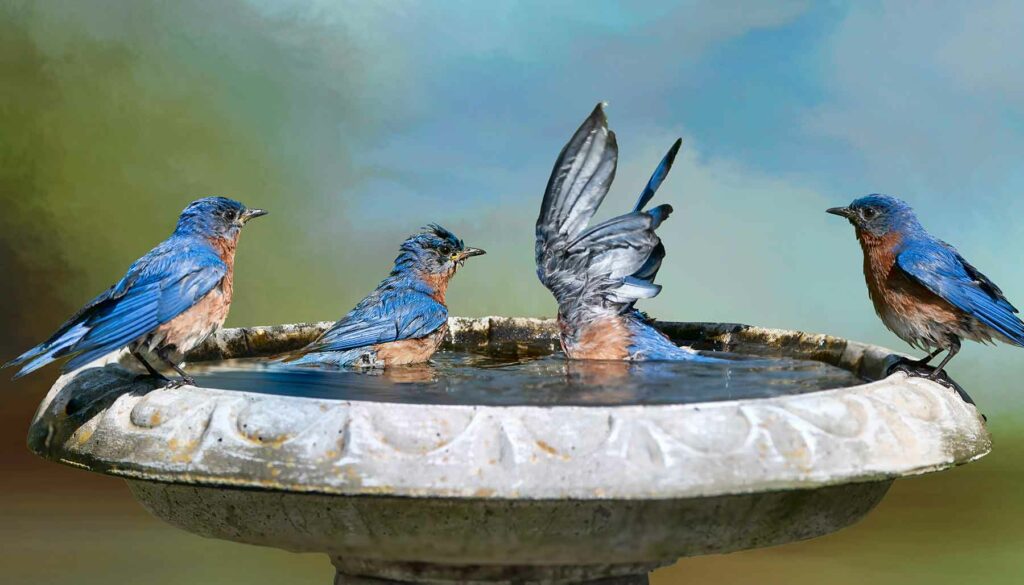
Birds really enjoy a good bath! They enjoy splashing around to clean their plumage and remove parasites. Birds also drink water every day, so providing fresh, clean water is essential if you want to attract them. Besides, watching birds as they play in the water is always a treat.
A simple, shallow birdbath is a great place to start. It only needs one to three inches of water. Make sure that you clean it and add fresh water regularly. To take it to the next level, install a little pond or other water feature in your yard.
Did you know that birds listen for moving water? You can draw the attention of even more birds by adding a pump or mister to your birdbath, pond, or other water source. The sound of the water will bring plenty of feathered friends to splash around.
Add Native Plants That Birds Love
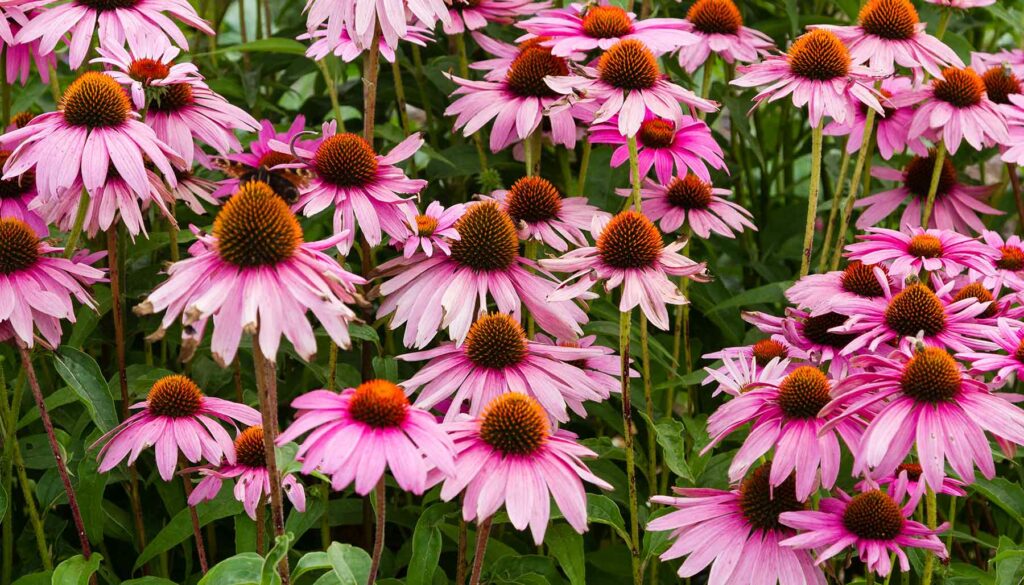
The birds in your area will certainly appreciate a variety of native plants! These flowers, shrubs, and trees will naturally attract birds that live in your area. Native plants will serve several functions when trying to create a bird sanctuary.
Birds are attracted to the bright colors of some plants, and these plants will give them a place to rest. They also like shrubs and trees that are relatively dense, as these provide added protection and shelter for them.
Related: 11 Breathtaking Flowers to Plant This Fall
Equally as important, these native plants will be a huge source of food for your feathered friends. Many flowers, like sunflowers, zinnias, coneflowers, and black-eyed Susans provide seeds that a variety of birds love. Plus, native flowers will provide nectar for hummingbirds. Plants that produce berries are also a great food source to attract birds.
There is another food source provided by native plants, too: insects. Native plants have leaves, bark, and more that are palatable to native caterpillars and other insects. By providing these, you’re serving up some seriously tasty food in those birds’ eyes. These are especially important because most bird species feed insects to their young.
Stop Using Insecticides In Your Yard
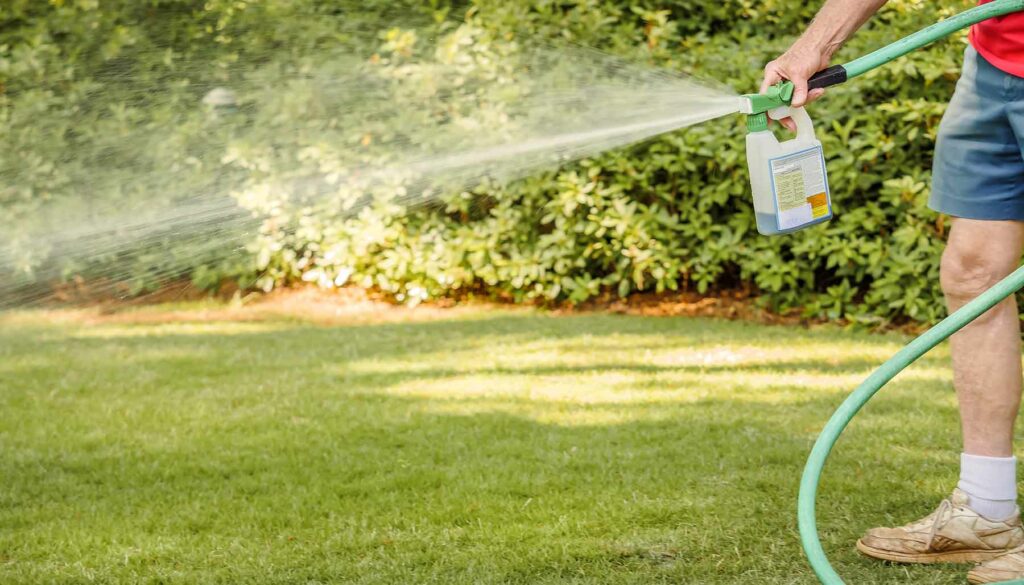
While we are talking about the importance of insects, I have to tell you to put the sprayer down. If you are consistently spraying your yard down with insecticides, it is time to stop. This is definitely not bird-friendly, for obvious reasons.
You may not enjoy insects, but they are an important part of the native habitat. By spraying away the “creepy crawlies,” you’re effectively removing a large food source for the local bird population. And what do they do when there isn’t any food to eat? They move to another location that does have their food of choice.
If your yard is overrun with mosquitoes or other pesky insects that you’d like to reduce, some natural pest control methods will help keep insects at bay – while also not destroying the food source entirely. And hey, attracting birds is actually a natural way to control insect populations!


